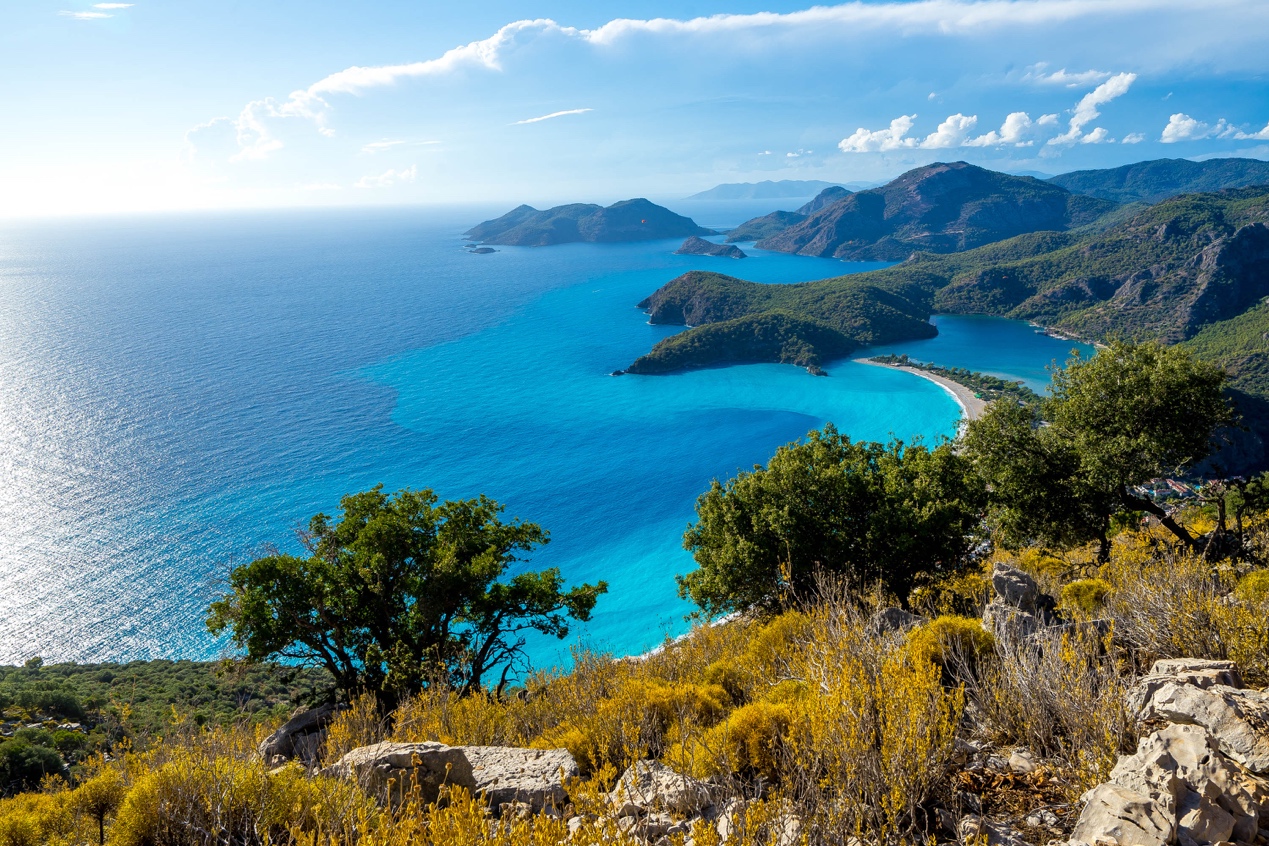The story was first published in Issue 08/2021 of Lonely Planet China magazine.
This English version was translated from the Chinese original with DeepL, with the manual correction of some obvious mistranslations.. I apologize for any mistakes made by this AI translation tool.

这是文章的第二部分,希望你们喜欢~
Kayaköy, the Greek ghost town that has been silent for a century
In novel Birds Without Wings, the British writer Louis de Bernières depicted a village on the Mediterranean called Eskibahçe, where a Greek girl, Philothea, and her Turkish lover, Ibrahim, were unwittingly caught up in the tide of history at the outbreak of World War I. Although the poignant story is pure fiction, “Eskibahçe” is indeed located in Kayaköy, a village outside Fethiye.
The minibus dropped me off at the junction leading to Kayaköy. Through the trees on the side of the road, I was greeted by a huge cluster of ruins that looked like a surreal movie. It’s hard to believe that Fethiye, a dreamlike place, is only half an hour away. Hundreds of houses are strewn across the hillside, and at first glance they look like an ordinary village. Only when you look closely do you see that they are all without windows, doors and roofs. In the abandoned fishing village of Shengshan Island, China, after only 20 years, the houses are crawling with age-old vines. However, in the dry and hot climate unique to the Mediterranean, Kayakoi has retained almost its original appearance despite the passage of a century.
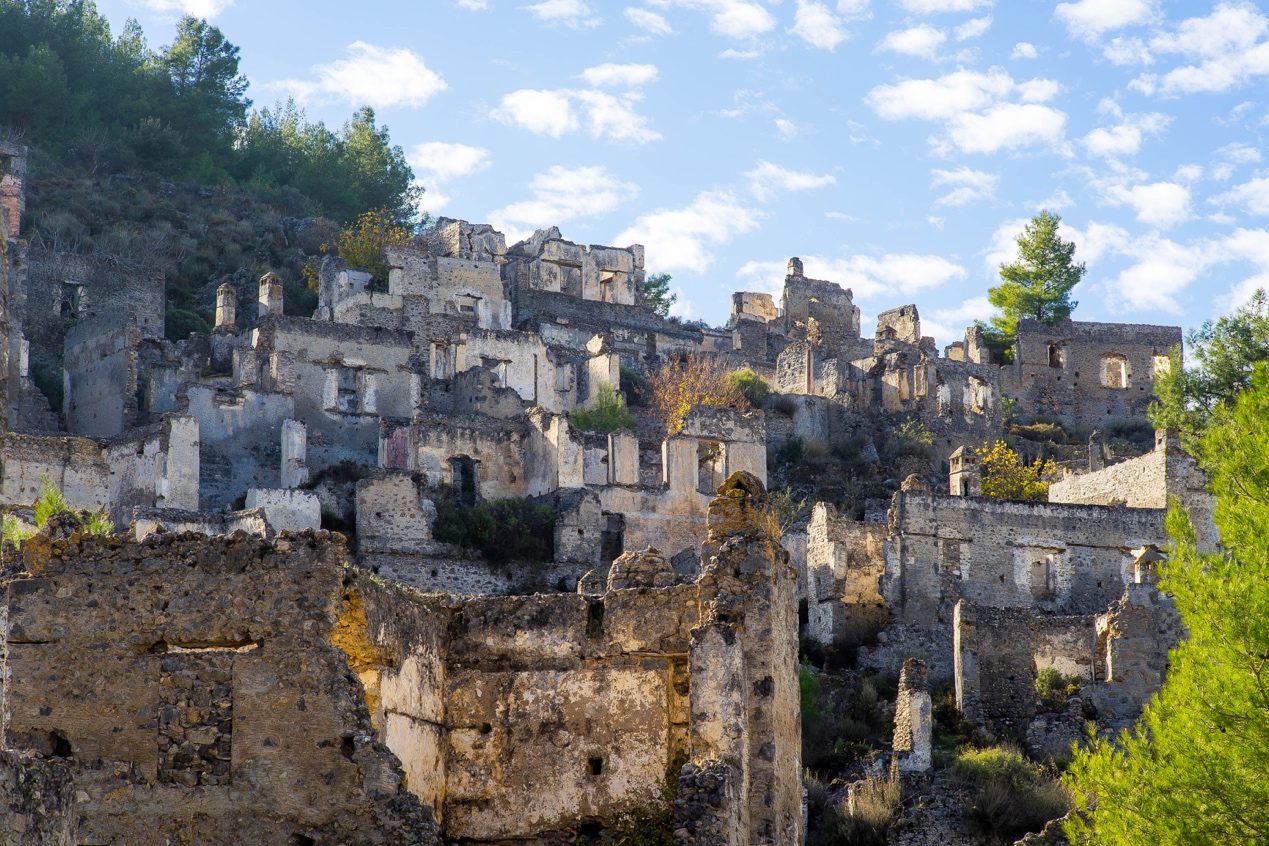
The village dates back as far as the 14th century and was once one of the main Greek settlements on the Anatolian coast, with a population of tens of thousands at its height. At the end of the 19th century, however, as the Ottoman Empire, which ruled the area, went into decline, nationalism, which had been suppressed for centuries, began to rise. Greeks and Turks, two peoples who had lived together for generations, eventually became enemies on the battlefield.
With the end of WWI, Greece and Turkey ended their dispute with a simple and brutal agreement: Greeks living on the Asian continent moved en masse to the Greek peninsula and surrounding islands, while Turks on the Greek peninsula and surrounding islands moved en masse to the Asian continent – an unprecedented population exchange that resulted in the present-day Greek and Turkish landscapes.
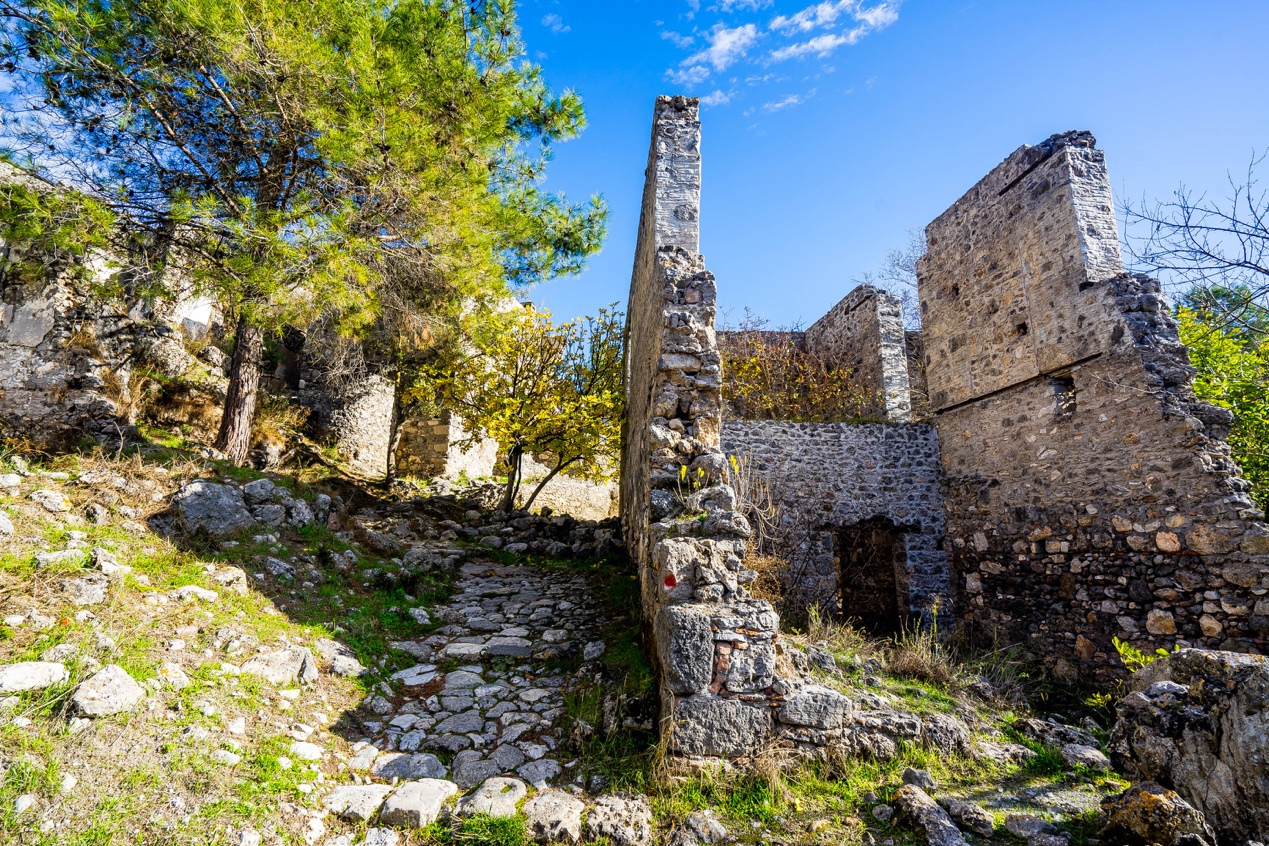
Once the center of the village, the Greek Orthodox Church still stands almost intact, in stark contrast to the ruins of the crumbling houses that surround it. Inside, the walls are dark and stained, but the wooden icon screens and even the black and white tiles have survived “through the centuries” to the present day. In addition to its unique dry climate, it was also converted into a mosque thanks to the Turks – Kayaköy was once a mixed village: the Greeks lived on the hill and the Turks on the bottom, living peacefully together for centuries. It is said that when the Greeks were asked to move away, the Turks of the same village petitioned for them to stay.
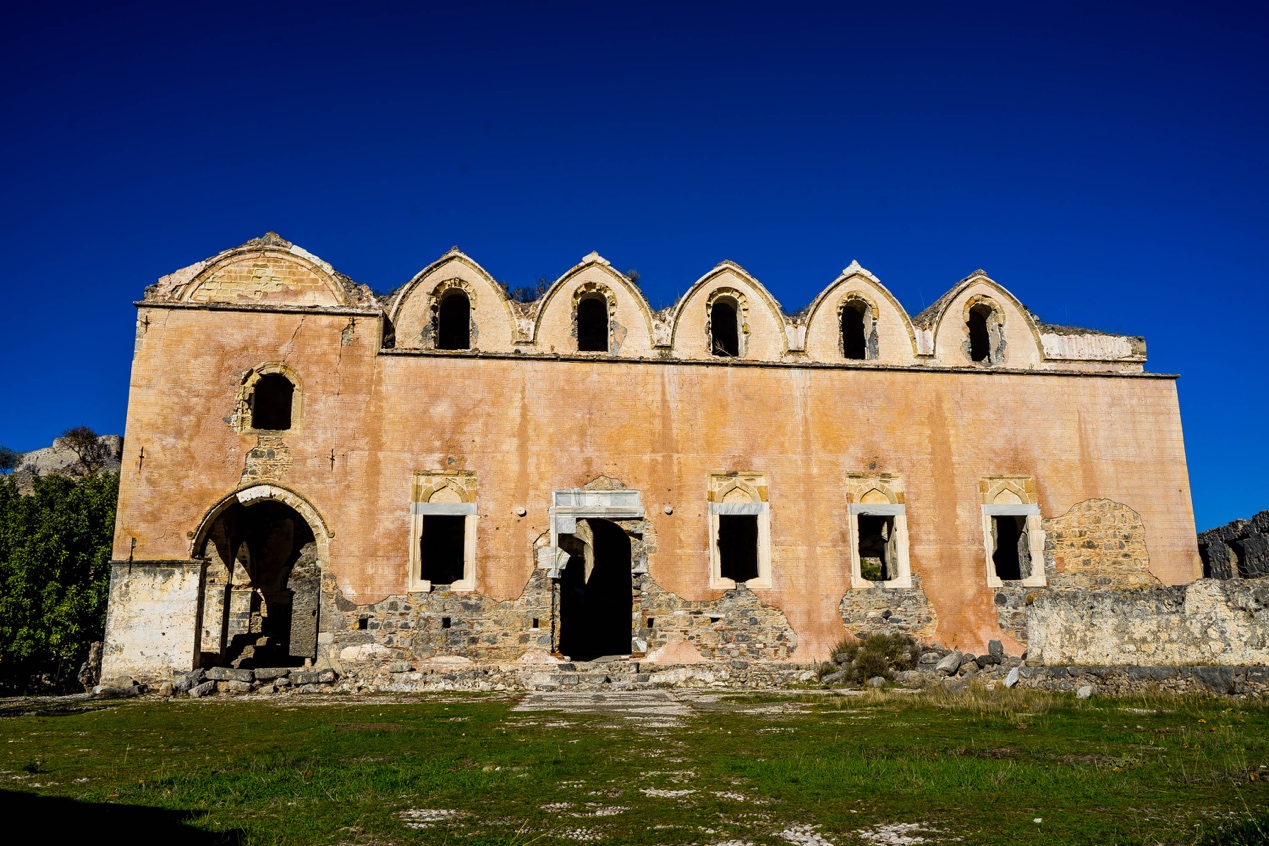
After the Greeks left, the exchange of Turks did not want to live in such rugged mountains, and the legend of “Greek ghosts” spread, so that the original Turkish inhabitants of the village eventually moved away. Thus, the once bustling town of Kayaköy was literally turned into a “ghost town”. I went to a high place overlooking the village and found that I could clearly distinguish between the two parts of the village – most of the houses in the deserted Greek area were left in ruins, while some of the houses in the deserted Turkish area still had windows and doors.

Today, although much of Kayaköy remains completely abandoned, the Turkish government has embarked on an ambitious development plan to turn it into an all-inclusive “food, drink and entertainment” rural resort. But no matter how it’s developed, it won’t be the same Kayaköy as it once was, with its inhabitants and their stories long gone.
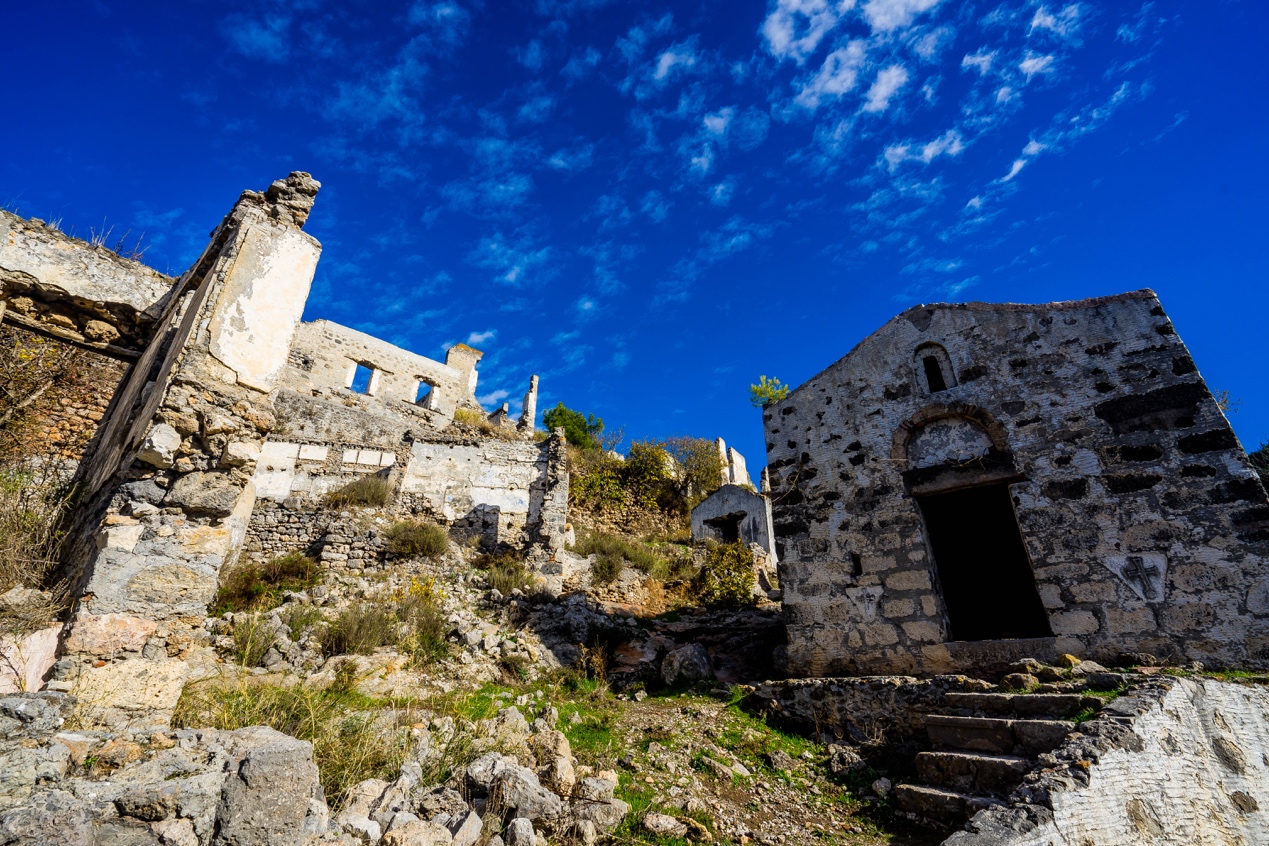
The Turkish Greeks who were uprooted by the population exchange, among them the group from Kayaköy and Fethiye (“Makri” in Greek), established their new home “Nea-Makri” near Athens by the sea. “Nea-Makri”, a name that gives a strong sense of their homesickness. I’ve never been there, but from the photos, it looks like it has the same blue coast as Fethiye.
I followed the mountain road behind the village to the official start of the Lycia Way. The “ghost town” was far away, but the surreal shock lingered in my mind, and I kept repeating the words from Birds Without Wings: “Man is a bird without wings, and a bird is a man without sorrow.”
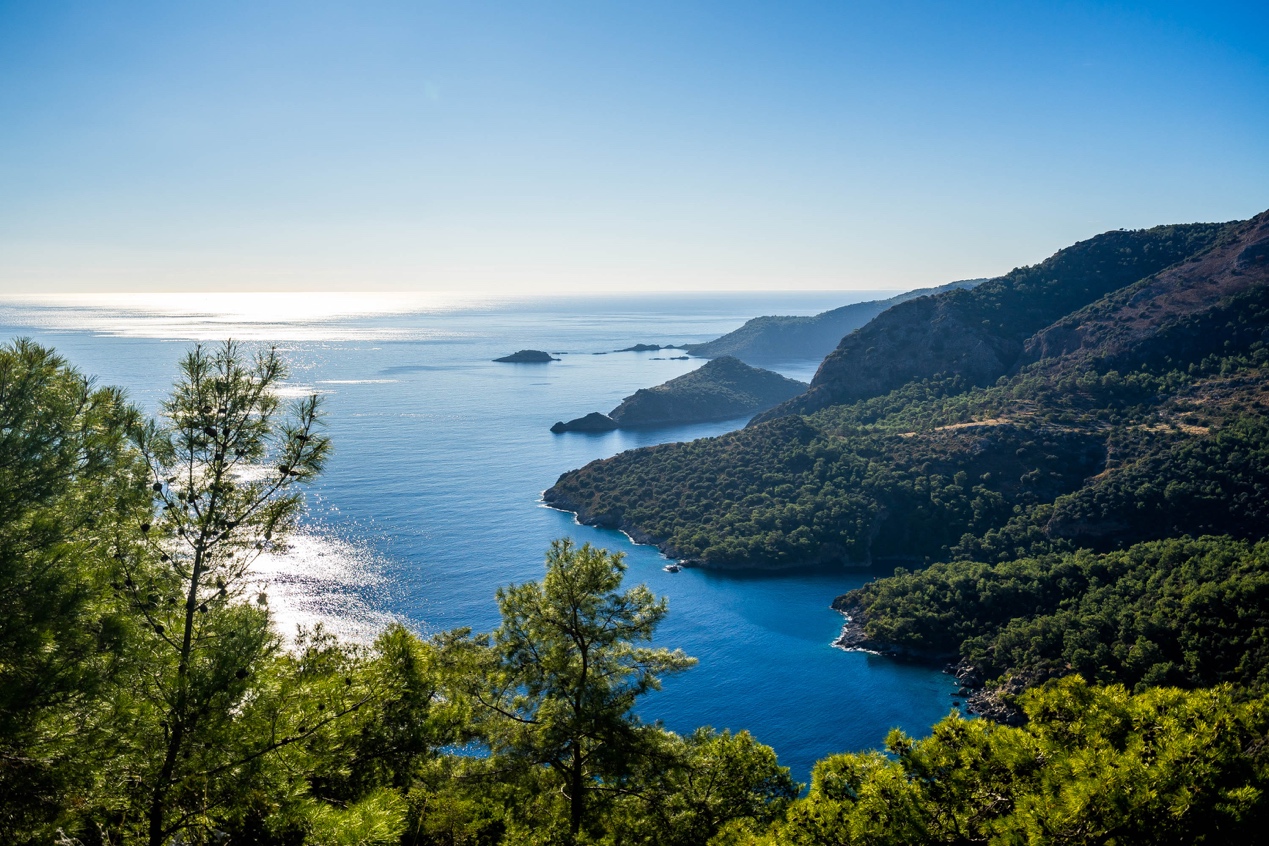
A sunset in Ölüdeniz
Ölüdeniz means “Dead Sea” in Turkish. This lagoon, not far from Kayaköy, with its eternal sapphire clarity, is also the official starting point of the Lycian Way. No matter how rough the outer sea is, it is always as calm as a paradise, hence the name “Dead Sea”. The milky white pebble beach is beside a vibrant seaside resort town. In addition to the usual restaurants and accommodations, many shops allow one to paraglide down from nearby Babadağ and take in the magnificent mountain and sea views from the air.
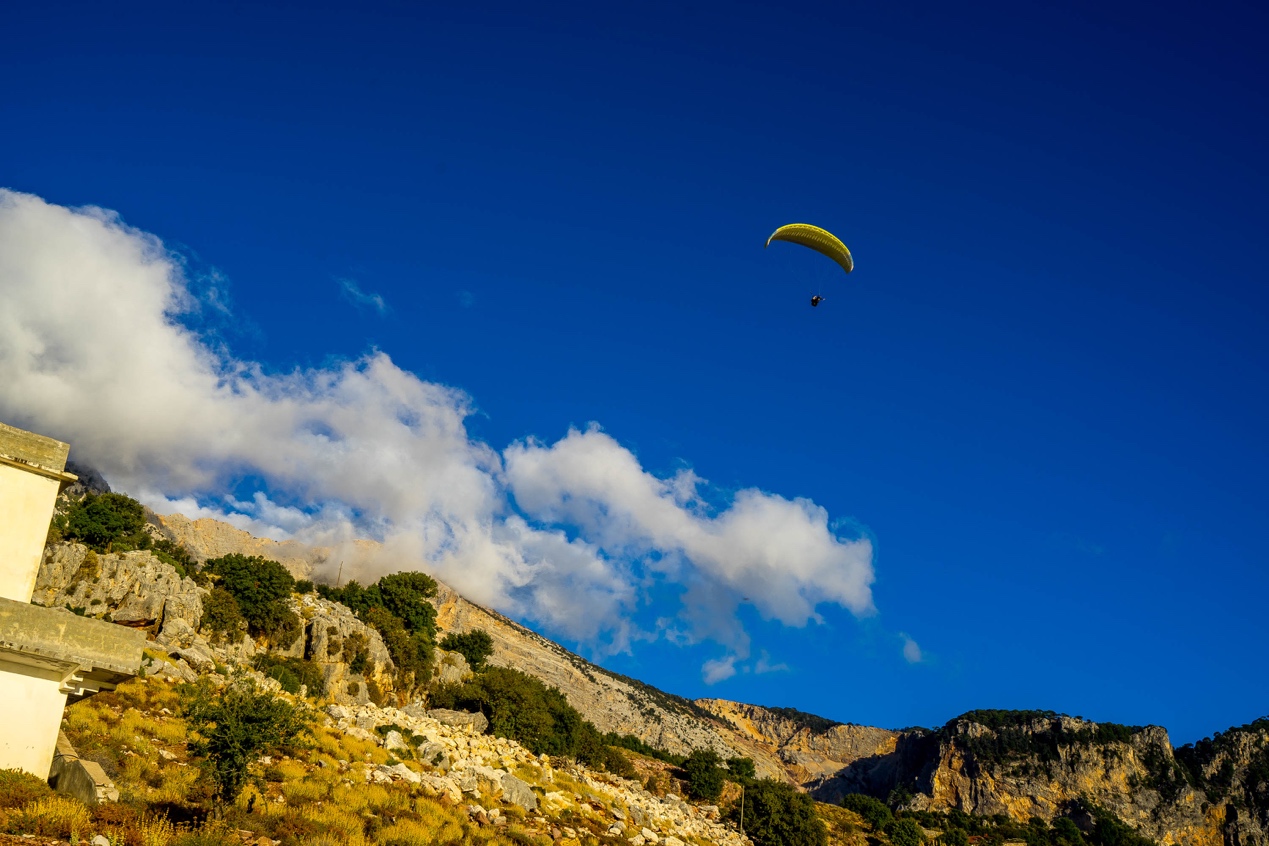
And I came to Ölüdeniz in large part because of an online photo of a sunset that has enthralled me for a long time. The photo appeared to have been taken on the hillside next to the town, on the hiking route of the Lycia Trail. Yet when I arrived at the bottom of the mountain, there was only a steep wall covered in dense jungle in front of me. According to the map, the hike up the mountain would have to be a detour from the side away from the town. The map contour on my phone showed the number “300”, “Is that 300 meters?” I looked up and it didn’t seem like 300 meters to the halfway point. “I think it’s 300 feet, which is 100 meters.” Thinking to myself, I glanced at my watch, I mustn’t make it around the proper route in time for sunset, so let’s climb hard!
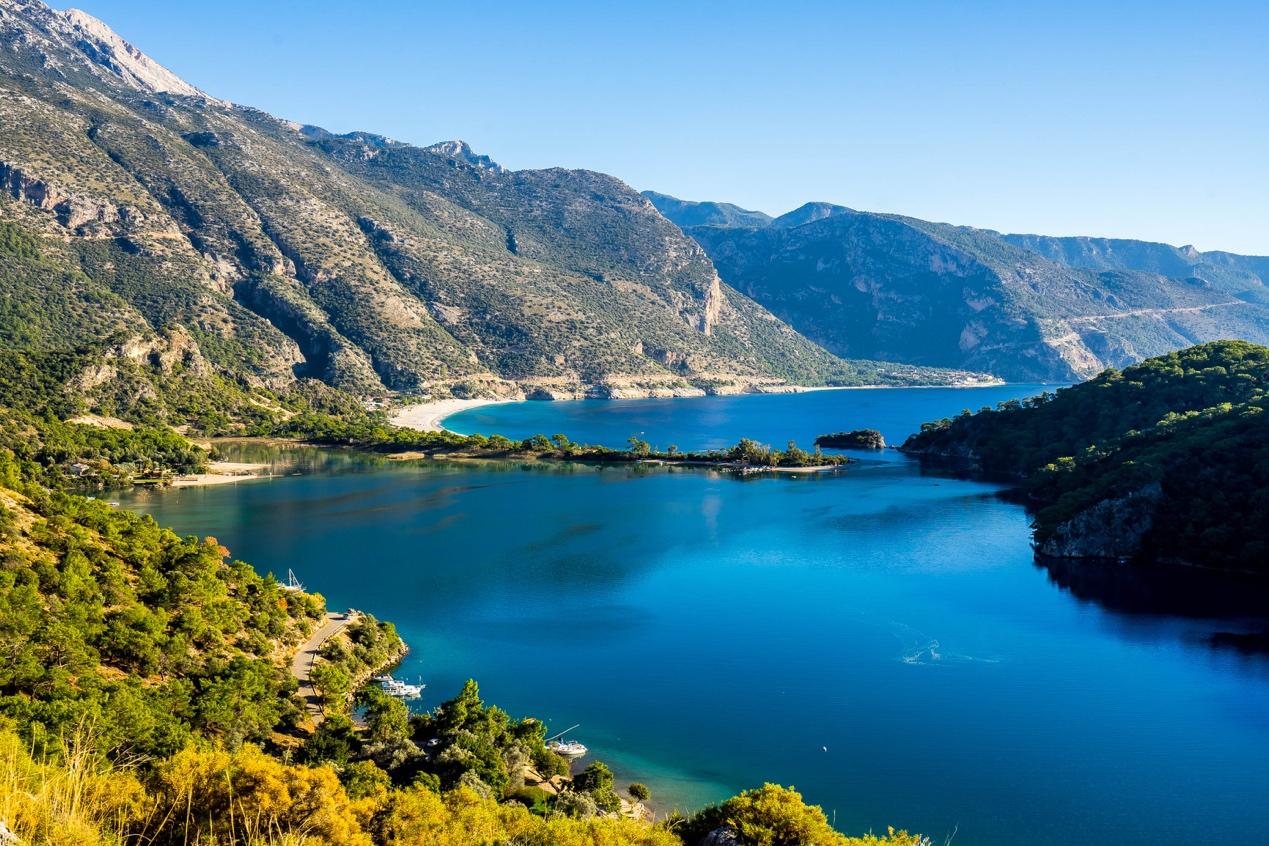
It was relatively easy to find a gap in the trees and climb up, but gradually the jungle became denser and even the smallest gaps were covered with barbs and thorns, making it impossible to move forward. I searched around and finally found a gravel “path” that had been washed out by a flash flood that I could barely crawl on. It was getting dark and I felt like I had climbed more than 100 meters, but the distance overhead didn’t seem to have decreased at all – alas, how silly of me, how can Turkish maps mark heights in feet?

If we gave up at this point, not only would we definitely miss the heartfelt sunset, but it would obviously be more difficult to descend through such rough terrain. “Just keep climbing!” The voice in my mind echoed. Finally, as the sun was about to sink into the horizon, long exhausted, I climbed to an open platform. Not caring about anything, I pulled out my camera and captured the most brilliant moment of the sunset over the sea. When I finished taking photos, I finally had time to sit down, stretch out my legs and relax and enjoy the afterglow of the sunset. I realized that my body was already covered in branches and thorns.
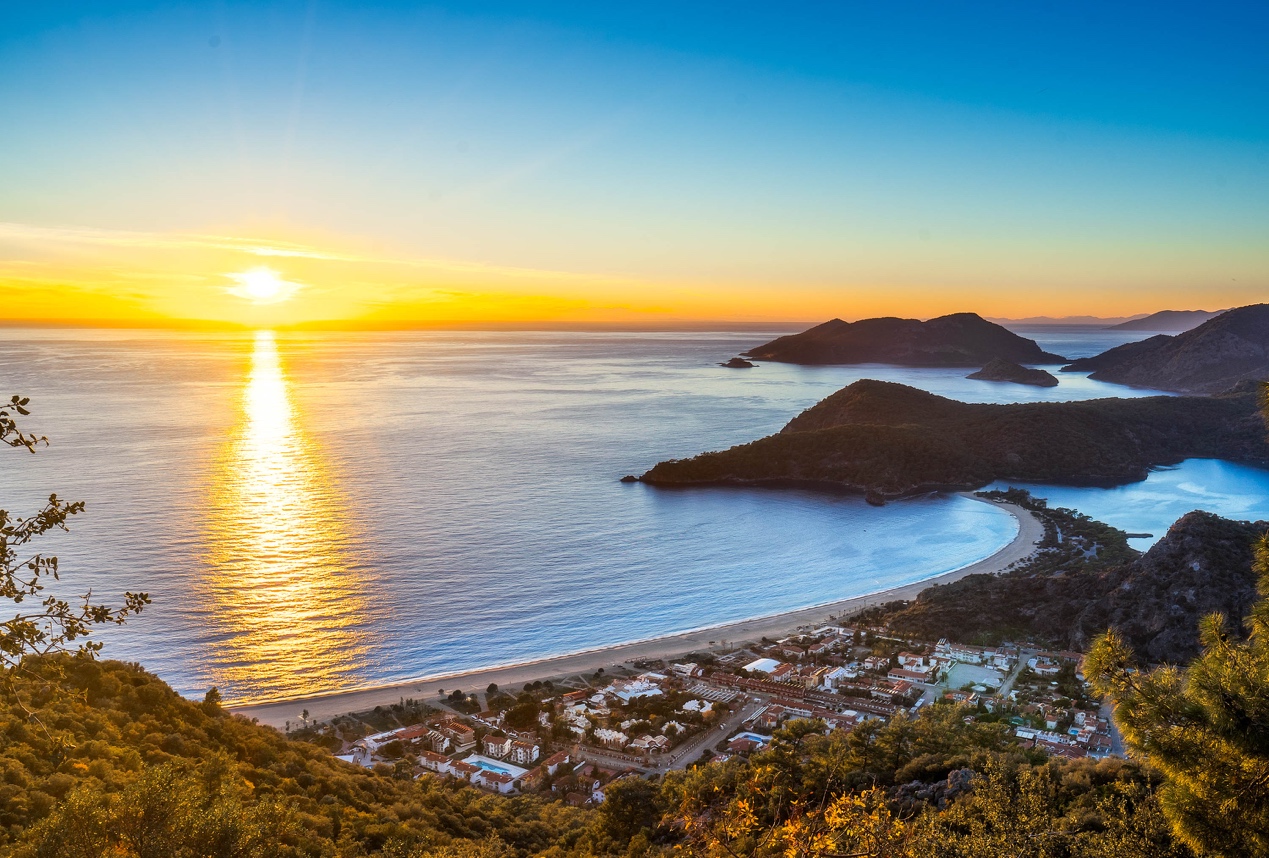
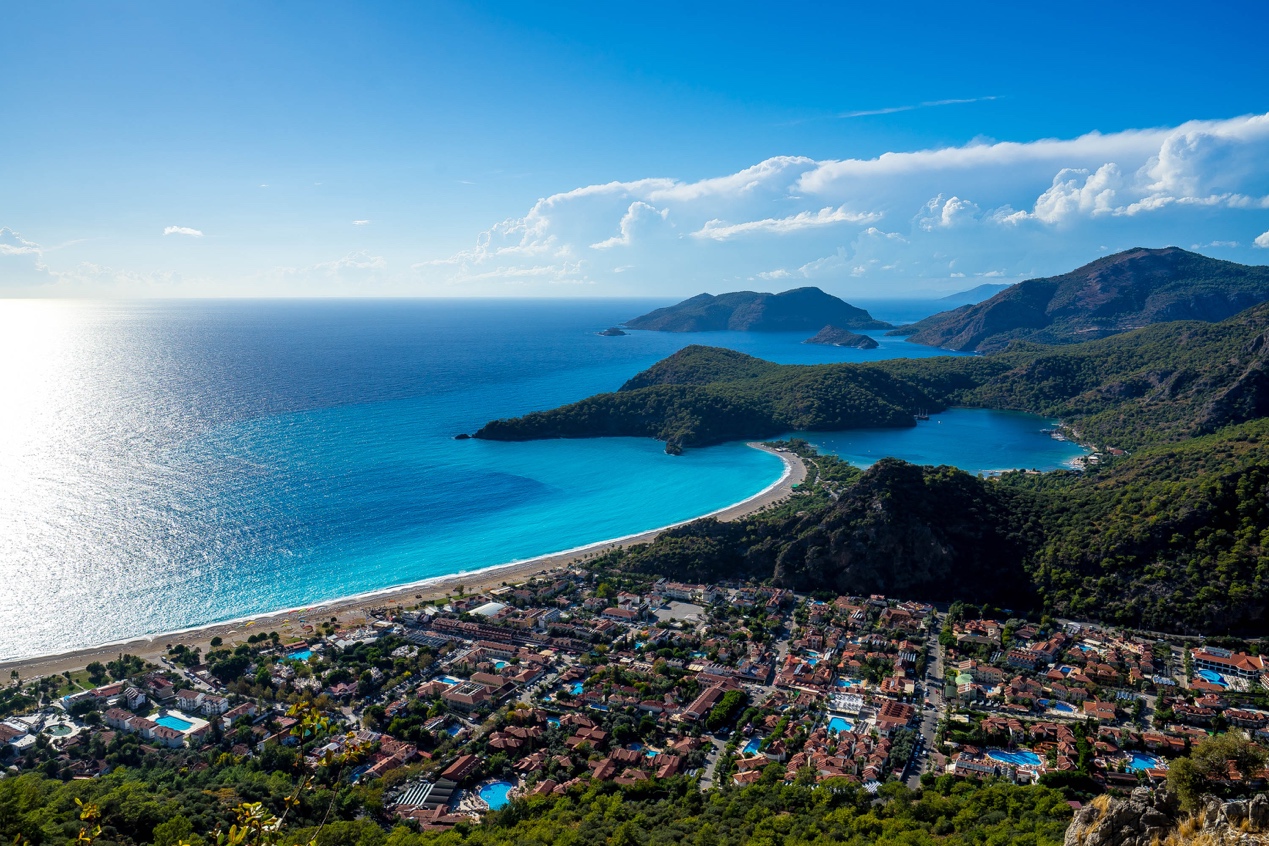
From here, it was a 20 minute walk back to the road along the Lycian Way. Just then, however, a small passing car actually stopped beside me and the driver poked his head out and asked if I needed a ride. I’ve had many free rides on my travels around the world, but this was the first time I’d ever offered to stop and give me a ride.
A year later, I made the trip back here. This time, I was finally able to start from the official hiking start and measure the beauty of it all with my feet. Although, like most hikers on the Lycian Way, I didn’t walk its entire length of over 500 kilometers (that usually takes a whole month), that didn’t stop me from taking advantage of the well-developed transportation along the way to see all the highlights.
